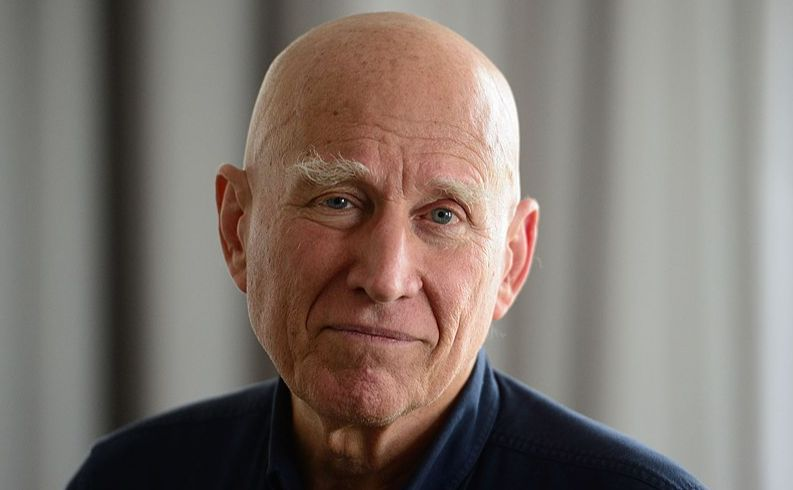
Sebastião Salgado, Franco-Brazilian photographer of a thousand paths
"An immense body of work, a testimony to reality at its most cruel". At the time of his death, in her vibrant tribute to Sebastião Salgado, the French Minister of Culture paid tribute to this great photographer of "shattered lives", a master of black-and-white expression. Born in Brazil, he lived a life of a thousand paths, which took him to France for his studies, where he became a citizen and where he died in May 2025.
" I am a migrant! As Sebastião Salgado told the daily Le Monde in 2016, in a beautiful interview in which he retraces his life, he evokes all the reasons, causes and effects, that led him to tirelessly travel the planet. As he himself says in the interview: " There has been so much luck and chance in my life, so many unpredictable forks in the road, that it's dizzying.
Flee dictatorship and choose France
It all began in Brazil's Rio Doce valley , where he was born in 1944 on the farm of his father, a farmer and landowner who had refused to sell his land during the Great Depression of the 1930s. Thanks to this stubborn refusal, his father was not ruined like so many other farmers at the time, enabling Sebastião Salgado to pursue a university education. His first degree was a Master's in Economics and Econometrics from the University of São Paulo.
" It was the beginning of Brazil's great industrialization, and I was passionate about macroeconomics and public finance. I was selected (...) to follow a brand-new master's program in Sao Paulo designed to train the country's future executives ". As he himself explains: " I became a senior clerk in this federated state, advising the Minister of Finance and responsible for agricultural programming in a booming sector of the megalopolis ". But, he adds, " I was close to the extreme left, very radical, and I gave half my salary to a political organization fighting against the dictatorship, ready for armed struggle ".
As confirmed in a tribute issued by the President of the French Republic, Sebastião Salgado had to flee the Brazilian dictatorship in 1969, when he was an economics student and militant of the Young Communists: " I had to choose between exile and clandestinity and urban guerrilla warfare ". He chose France, because " France was the country of human rights! All Brazilian intellectuals dreamed of coming to France. And French was the first language of study at school ", he tells Le Monde. As he also recounts in Variances, the alumni magazine of ENSAE, where he will soon be studying, many Brazilian intellectuals chose " France as their land of exile, confident in the country's ability to welcome them and, for the younger ones of whom I was one, to help them continue their education ".
Becoming a student in France and turning your life upside down
Sebastião Salgado left Brazil in 1969 for Paris, where he settled with his young wife at the Cité internationale universitaire on boulevard Jourdan, and enrolled at ENSAE (École nationale de la statistique et de l'administration économique) and EHESS (École des hautes études en sciences sociales) to study for a 3rd cycle doctorate in agricultural economics. He moved to France with his young wife, Lélia Deluiz Wanick, whom he met at the Alliance française in Vitória, and who was to be his lifelong partner in all his artistic projects.
" We did everything together. And we've built a life on the same ethical and ideological references. This is how Sebastião Salgado talks about Lélia and his move to France. Yet, two years after his arrival in France, he gave up finishing his doctorate to accept a proposal from the International Coffee Organization (ICO) "which offered him a position as an international economist in its investment bank and direct responsibility for five African countries (...), in which he would initiate and develop projects to diversify coffee growing", as Variances magazine points out.
He worked there until 1973, when he decided to make a sudden career change. His work at the International Coffee Organization had nonetheless given him the opportunity to travel the globe and open his mind to photography, for, according to the French President, "the first scenes he immortalized with his wife's Pentax were landscapes marked by drought and famine in Niger and Ethiopia".
Discover black and white and travel the globe
It was in fact as a self-taught photographer that he discovered photography, and it was in the magazine Variances that he best defined this radical change: " I found in the photographer's special way of looking at things a concrete expression of what I understood intellectually about the life around me. I then decided to use this language to look and to say, my training as an economist allowing me to add a third essential dimension: looking, understanding and saying ".
Then followed the world tour of an outstanding photographer, a specialist in an exclusive vision in black and white: the Sahel, the Portugal of the Carnation Revolution, Angola, Latin America of course. He travelled the world for some of the biggest agencies: Sygma, Gamma, Magnum. As the Presidency wrote in its tribute, "an eye was born, an ability to capture gestures, amplify blacks and whites, detect beauty in the shadows, and always carry a humanistic gaze removed from all judgment". More precisely still, according to the Ministry of Culture, "by extending his work to migrations, armed conflicts, poverty and climate crises", Sebastião Salgado had become " the photographer of broken lives, not without detractors, he had nevertheless succeeded, through the depth of black and white, in detecting beauty and restoring dignity to them".
Replanting trees and sitting in the Académie des Beaux-Arts
But in this world tour of armed conflicts, the horror of the Rwandan genocide was for Sebastião Salgado "a tipping point". " I saw the most terrible things imaginable (...). The accumulation of these visions was a terrible shock. I lost faith in humanity", he told Le Monde. According to Le Monde, at the end of the 1990s, "wounded by his experience in the hell of the genocide in Rwanda", the photographer returned to his family farm in Brazil, where he and his wife Lélia founded Institut Terra, a "colossal reforestation project in the Rio Doce valley", a "fabulous project" with the aim of replanting 2.5 million trees of 200 different species.
Parallel to this project, in France and around the world, he is "fully recognized for his art". He is also a naturalized French citizen and, according to the French Ministry of Culture, "his link with our country was definitively sealed when he was elected to the Académie des Beaux-Arts in 2016 ". Yet, he tells Le Monde, " I am a French photographer, it's true, but my fibers, my soul, my memories of torrential rain that no Frenchman can know, constantly remind me that I am an immigrant ".
To find out more
- interview in Le Monde, June 2016
- tribute statement from the Ministry of Culture
- tribute statement from the French President's office
- press release from ENSAE, with an interview in Variances magazine, February 2014








No comment
Log in to post comment. Log in.